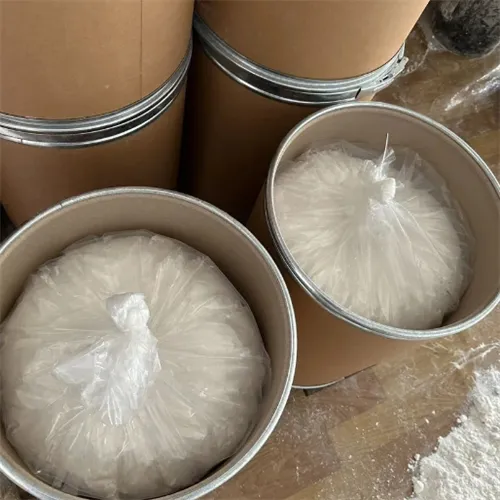Warning: Undefined array key "title" in /home/www/wwwroot/HTML/www.exportstart.com/wp-content/themes/1198/header.php on line 6
Warning: Undefined array key "file" in /home/www/wwwroot/HTML/www.exportstart.com/wp-content/themes/1198/header.php on line 7
Warning: Undefined array key "title" in /home/www/wwwroot/HTML/www.exportstart.com/wp-content/themes/1198/header.php on line 7
Warning: Undefined array key "title" in /home/www/wwwroot/HTML/www.exportstart.com/wp-content/themes/1198/header.php on line 7
- Afrikaans
- Albanian
- Amharic
- Arabic
- Armenian
- Azerbaijani
- Basque
- Belarusian
- Bengali
- Bosnian
- Bulgarian
- Catalan
- Cebuano
- China
- China (Taiwan)
- Corsican
- Croatian
- Czech
- Danish
- Dutch
- English
- Esperanto
- Estonian
- Finnish
- French
- Frisian
- Galician
- Georgian
- German
- Greek
- Gujarati
- Haitian Creole
- hausa
- hawaiian
- Hebrew
- Hindi
- Miao
- Hungarian
- Icelandic
- igbo
- Indonesian
- irish
- Italian
- Japanese
- Javanese
- Kannada
- kazakh
- Khmer
- Rwandese
- Korean
- Kurdish
- Kyrgyz
- Lao
- Latin
- Latvian
- Lithuanian
- Luxembourgish
- Macedonian
- Malgashi
- Malay
- Malayalam
- Maltese
- Maori
- Marathi
- Mongolian
- Myanmar
- Nepali
- Norwegian
- Norwegian
- Occitan
- Pashto
- Persian
- Polish
- Portuguese
- Punjabi
- Romanian
- Russian
- Samoan
- Scottish Gaelic
- Serbian
- Sesotho
- Shona
- Sindhi
- Sinhala
- Slovak
- Slovenian
- Somali
- Spanish
- Sundanese
- Swahili
- Swedish
- Tagalog
- Tajik
- Tamil
- Tatar
- Telugu
- Thai
- Turkish
- Turkmen
- Ukrainian
- Urdu
- Uighur
- Uzbek
- Vietnamese
- Welsh
- Bantu
- Yiddish
- Yoruba
- Zulu
Aug . 13, 2024 05:16 Back to list
The Use and Effects of Sodium Cyclamate and Sodium Saccharin in Food Industry
Cyclamate and Sodium Saccharin Understanding Their Uses and Controversies
Cyclamate and sodium saccharin are two artificial sweeteners that have been widely used as sugar substitutes in various food products. Their low-calorie content makes them particularly appealing in a world increasingly focused on obesity and diabetes management. However, both of these sweeteners have sparked debate over their safety and health implications, making them important subjects for discussion in the fields of nutrition and public health.
What Are Cyclamate and Sodium Saccharin?
Cyclamate is a non-nutritive sweetener that is approximately 30 times sweeter than sucrose (table sugar). It was first discovered in the 1930s and gained popularity as a low-calorie sweetener, particularly in the 1960s when it became widely used in soft drinks and other processed foods. Sodium saccharin, on the other hand, is one of the oldest artificial sweeteners, developed in the late 19th century. This compound is about 300 to 400 times sweeter than sugar and is often found in diet sodas, sugar-free gums, and various other low-calorie food products.
Health Concerns and Regulatory Status
The use of these sweeteners has not been without controversy. Cyclamate was banned in the United States in 1970 after studies indicated it could cause bladder cancer in laboratory rats. This ban was based on concerns that cyclamate could be a potential carcinogen, leading to significant scrutiny of its safety. However, it is still permitted in many other countries, including Canada and members of the European Union, where regulatory agencies have deemed it safe for consumption in moderate amounts.
cyclamate de sodium et saccharine de sodium

Sodium saccharin has had a similarly checkered history. It faced its own health scares in the 1970s when studies linked it to bladder cancer in rats. As a result, products containing saccharin were required to carry warning labels. However, subsequent research suggested that the mechanisms by which saccharin caused cancer in rats did not apply to humans. In 2000, the United States removed saccharin from its list of potential carcinogens, and it is now widely regarded as safe when consumed within the established acceptable daily intake levels.
Current Uses and Market Trends
Despite initial concerns, both cyclamate and sodium saccharin remain in use today. They play a significant role in the food industry, particularly in products marketed to individuals with diabetes or those looking to reduce caloric intake. Sugar substitutes like these have grown in popularity as consumers become more health-conscious. The rise of the low-carb and ketogenic diets has further propelled these sweeteners into the spotlight, as they allow for sweetness without the accompanying carbohydrates or calories of traditional sugars.
The market for artificial sweeteners is expected to continue growing, driven by increasing awareness of health issues related to sugar consumption. However, it’s important to note that the long-term health effects of consuming artificial sweeteners are still being studied. Some research suggests that artificial sweeteners, including cyclamate and sodium saccharin, may have effects on metabolism and gut bacteria, though results can vary widely depending on individual circumstances.
Conclusion
Cyclamate and sodium saccharin are prime examples of the complexity surrounding artificial sweeteners. While they offer a solution to reducing sugar consumption and controlling caloric intake, they also invite substantial caution and ongoing study concerning their safety and long-term health effects. As consumer awareness and demand for low-calorie products continue to rise, it remains crucial for regulatory agencies to monitor and evaluate these substances to ensure they are safe for the public. Ultimately, the choice to use artificial sweeteners should be made with careful consideration of individual health needs and preferences.
Latest news
-
Certifications for Vegetarian and Xanthan Gum Vegetarian
NewsJun.17,2025
-
Sustainability Trends Reshaping the SLES N70 Market
NewsJun.17,2025
-
Propylene Glycol Use in Vaccines: Balancing Function and Perception
NewsJun.17,2025
-
Petroleum Jelly in Skincare: Balancing Benefits and Backlash
NewsJun.17,2025
-
Energy Price Volatility and Ripple Effect on Caprolactam Markets
NewsJun.17,2025
-
Spectroscopic Techniques for Adipic Acid Molecular Weight
NewsJun.17,2025

